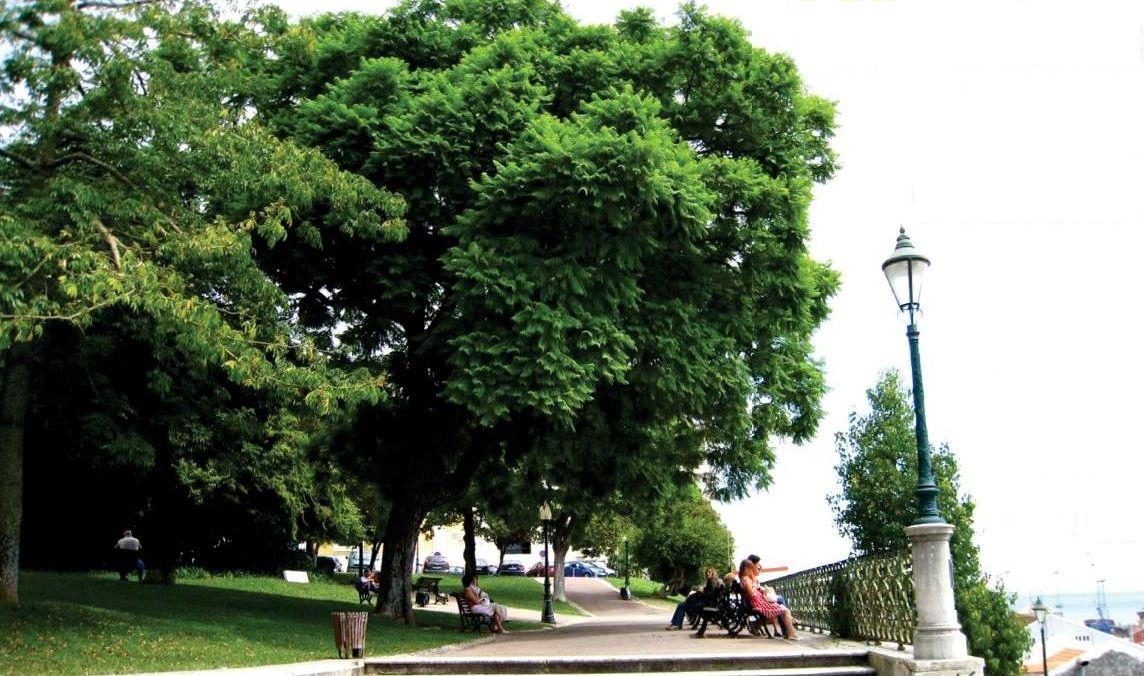COORDINATION: Ana Luísa Soares (CEABN InBIO).
CEABN TEAM: Ana Isabel Silva, Ana Luísa Soares, Conceição Colaço, Sónia Azambuja.
OTHER INSTITUTIONS: Universidade do Algarve (UAlg), Centro de Botânica Aplicada à Agricultura (CBAA/ISA/UTL), Centro de Investigação em Biodiversidade de Recursos Genéticos (CIBIO/ICETA-Porto/UP), Instituto de Engenharia de Estruturas, Território e Construção (ICIST/IST/UTL).
This Project aimed to undertake an historical, artistic and botanical study of the development of Lisbon’s gardens, “quintas” and parks from the 18th century up to the 1960’s. The interdisciplinary research team included specialists from landscape architecture, architecture, history of art, ecology and botany.
We intended to examine the development of public and private gardens in Lisbon, from the creation of the first public garden Passeio Público (current Avenida da Liberdade) commissioned by Sebastião José de Carvalho e Melo, Count of Oeiras – Marquis of Pombal – up to the Modernist period. This research furthered current knowledge of Lisbon landscape heritage and contributed to its legal classification, enhancement and dissemination and the promotion of cultural tourism.
The botanical components of the gardens in question included botanical surveys, as well as the systematisation and organisation of existing surveys in order to understand the make-up and diversity of the city’s treed areas. The historic and botanical information was managed using a relational database that was an important information management tool. The results of the historic research and the botanical surveys were published as a book and on-line together with the Lisbon landscape heritage inventory database (18th-20th centuries). The historic research on Lisbon landscape heritage was undertaken in the Torre do Tombo Archive, Municipal Historic Archive, Forte de Sacavém Archive, Lisbon Photographic Archive, National Library, Lisbon Studies Office, House of Bragança Foundation Archive, and other reference libraries and record offices. The historic research brought together a range of documentary, bibliographic and iconographic sources that gave us a new way of looking at the trends in Lisbon´s landscape art.
At the current time, the state of the art is such that no in-depth, interdisciplinary study exists that shows the development of Lisbon gardens from the 18th century up to the 1960’s and their relationship to the city’s urban growth. The aim of this study was to examine further the historic and aesthetic benefits, which allowed those gardens to be classified as part of the city’s Cultural Heritage and thus provide Lisbon with a “product” that has strong tourist potential. Under article 1 of The Florence Charter-Historic Gardens [ICO1982] “A historic garden is an architectural and horticultural composition of interest to the public from the historical or artistic point of view". As such, it is to be considered as a monument.” In terms of scale, article 6 of that Charter states that “the term "historic garden" is equally applicable to small gardens and to large parks, whether formal or "landscape".” In [ICO1982] it is stated that “The preservation of historic gardens depends on their identification and listing.” The historic garden as the cultural testimony of a society arises “as the expression of the direct affinity between civilisation and nature, and as a place of enjoyment suited to meditation or repose, and thus acquires the cosmic significance of an idealised image of the world, a "paradise" in the etymological sense of the term, and yet a testimony to a culture, a style, an age, and often to the originality of a creative artist” [ICO1982].
This project was coordinated and run by an experienced team: Ana Luísa Soares (PI) is a founder and, vice-president of the Portuguese Historic Gardens and Sites Association since 2003, and was co-author of the historic research and restoration project for Ajuda Botanical Garden (18th century). PI was nominated in December 2009 Vice-President of ISA/UTL and she is head of the Landscape Architecture Unit. José Carlos Costa (JCC), Teresa de Vasconcelos (TV) and José Monteiro (JM) have undertaken benchmark botanical studies both at the country and the Lisbon level. Ana Tostões (AT) is a respected researcher who has published works on the history of architecture, town planning and Lisbon’s parks and gardens. She is currently Vice- President of the Portuguese Institute of Architects and a professor at Lisbon’s Instituto Superior Técnico. Maria Conceição Colaço (MCC) is a Forest Engineer and specialist in environmental education. Teresa Marques (TM) is a Landscape Architect and a respected researcher on the landscape heritage in Portugal, recently she has finished her PhD’s thesis on Porto garden history (XIX-XX).
The consultancy team has a strong interdisciplinary dimension including History of Art (Vitor Serrão and Raquel Henriques da Silva), Environmental Philosophy (Leonel Ribeiro dos Santos), History of Culture (Ana Cristina Costa Gomes), History of Garden Art (Tom Turner, David Jacques and Teresa Chambel), Cultural Tourism (Mike Robinson) Ecology (Francisco Castro Rego), Gardens Management at Municipality of Lisbon (Mafalda Farmhouse) and GIS (Pedro Arsénio).






